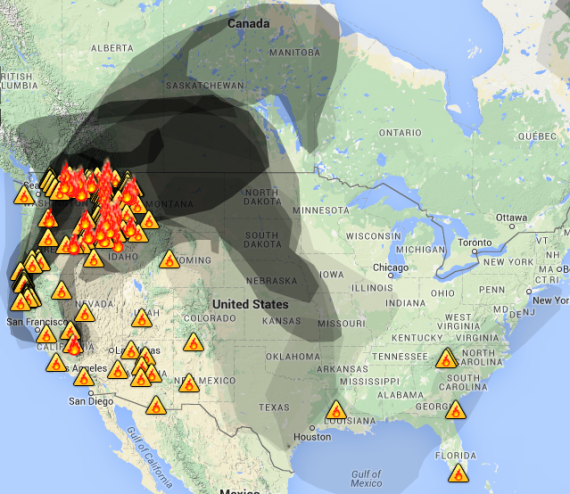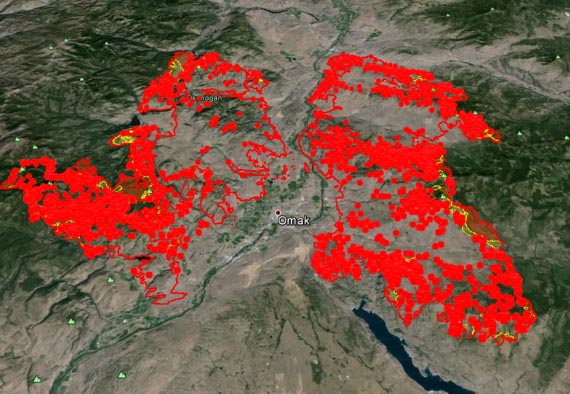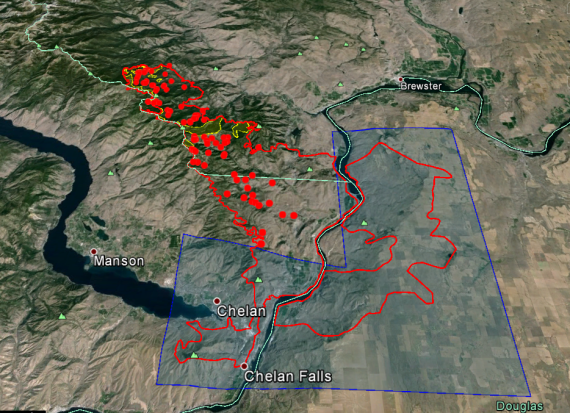John N. Maclean’s review of the book, “On the Burning Edge”, was first printed in the “Journal of Forestry”, a publication of the Society of American Foresters. It is used with permission here.
****
HOTSHOTS, MISSED SHOTS, AND WHERE’S THE FIRE?
On the Burning Edge. Kyle Dickman. 304 p. $26.00 (hardcover). Ballantine Books. 2015. ISBN: 978-0-55339-212-8.
Journal of Forestry 113
By John N. Maclean
Copyright © 2015 Society of American Foresters
A book written quickly in the wake of a major disaster, in this case the Yarnell Hill Fire of 2013, should be a first draft of history, a skeleton on which the reading public can rely, with adjustments as time brings more insight, reflection, and information.
The Yarnell Hill Fire, which cost the lives of 19 members of the Granite Mountain Hotshots, is the worst disaster for an organized wildland fire crew in over a century, back to the Big Burn of 1910. Two years later, many questions remain unanswered: Why did the hotshots leave a safe place and descend into a box canyon where they were overwhelmed by a flame front? Why wasn’t the fire controlled in its early stages? Were supervisory personnel negligent? Why are the two official investigations, both by the state of Arizona, so radically different: one says there were no major mistakes; the other says there were many willful and serious ones.
The fire has been the subject of extensive media and Internet coverage. A massive, unprecedented quantity of audiovisual recordings made during the fire and other data provide a rich trove of factual material to consider.
The first book based on the fire appeared in May 2015: On the Burning Edge, by Kyle Dickman, who wrote about the event earlier for Outside Magazine. Dickman, who was a temporary firefighter with the Tahoe Hotshots for most of the 2006 season, spends the bulk of the book on hotshot culture and the experiences of the Granite Mountain Hotshots well before the Yarnell Hill Fire. He speed-wrote and reported the book on a tight, 16-month publisher’s deadline. “I’d wake up at six and type until 2 AM and find time for a nap and a run in between,” he has noted.
The book reads easily, but shows every sign of an overhasty attempt to capitalize on a human and natural disaster, for which the publisher should accept some responsibility. A marketing blurb claiming that the book is the “definitive” account of the Yarnell Hill Fire has done the author no favor. Even friendly reviewers on Amazon. com balk at that one.
The book contains far too many factual errors, several even corrected in second references. Dickman writes that his main source, Brendan McDonough, the lone surviving hotshot, was a rookie 4 years earlier, then later correctly states he was starting his third year as a hotshot. A short prologue says a middle school is “soon to catch fire,” and a very large air tanker (VLAT) “could unload thirty thousand gallons of fire retardant in a single drop.” Later, Dickman reports flames never touched the middle school and a VLAT can hold just over 11,000 gallons.
Important historical references can be vague: the first hotshot crews “emerged in the 1940s”; his benchmark for previous wildland firefighter deaths was “in the 1930s,” probably a reference to the Griffith Park Fire of 1933 in the city of Los Angeles, which killed 29 members of a road crew impressed into fighting the fire.
And why regularly overdramatize such an inherently dramatic event? A falling tree with only an 18-in. diameter lands with enough force to cause a minor earthquake: “Every hotshot on the line could feel the ground shake.” Alaska fires toss half-ton logs thousands of feet into the air. More significantly, a breathless telling of McDonough’s retreat from a lookout post doesn’t match the evidence or the account of the firefighter who picked him up.
Dickman has been criticized for inventing dialogue and thoughts for the lost crew in his magazine article and again in his book. In recounting a prior fire, for example, one hotshot who did not survive the Yarnell Hill Fire finds time for a quiet moment alone to “fantasize of past lovers” and “create and dispel” fears of losing a girlfriend. Young men do think in these terms, but the scene smacks of make-believe.
When he gets to the Yarnell Hill Fire, Dickman adds little to an understanding of this highly complex event with one potentially significant exception, about a vital radio conversation just before the hotshots left “good black” and headed for the box canyon. McDonough, who survived because he was detached as a lookout, has told his story in different versions to official investigators and others. What he had not done before Dickman’s book came out was to tell his story under oath, for litigation stemming from the fire.
In the book, McDonough exonerates Eric Marsh, Granite Mountain’s superintendent, from a much-rumored charge that he ordered his crew to pack up and leave the “good black” during a heated radio exchange with his No. 2, Jesse Steed. Dickman tells us McDonough, who overheard the relevant conversation, heard no quarrel and no dissenting voice. Whether that account holds up remains to be seen: one hopes it does, for everyone’s sake.
John N. Maclean (john@johnmacleanbooks.com), author of Fire on the Mountain and other books on wildland fire. Maclean is writing a book about the Yarnell Hill Fire.










